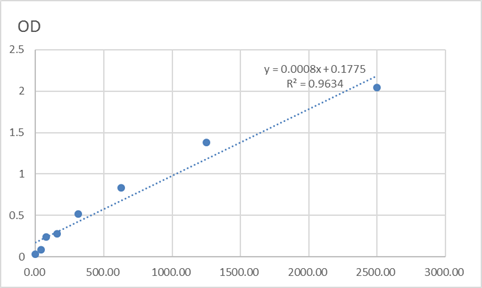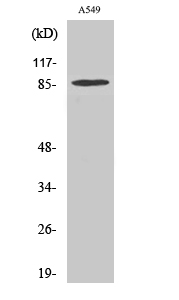Total TAF II p100 Cell-Based Colorimetric ELISA Kit
- Catalog No.:KA3750C
- Applications:ELISA
- Reactivity:Human;Mouse
- Gene Name:
- TAF5
- Human Gene Id:
- 6877
- Human Swiss Prot No:
- Q15542
- Mouse Swiss Prot No:
- Q8C092
- Storage Stability:
- 2-8°C/6 months
- Other Name:
- Transcription initiation factor TFIID subunit 5 (Transcription initiation factor TFIID 100 kDa subunit) (TAF(II)100) (TAFII-100) (TAFII100)
- Detection Method:
- Colorimetric
- Background:
- domain:Distinct domains of TAF5/TAFII100 are required for functional interaction with transcription factor TFIIFB (RAP30) and incorporation into the TFIID complex.,function:TAFs are components of the transcription factor IID (TFIID) complex, PCAF histone acetylase complex and TBP-free TAFII complex (TFTC). TAFs components-TIIFD are essential for mediating regulation of RNA polymerase transcription. TAF5/TAFII100 interacts strongly with the histone H4-related TAF6/TAFII80 and the histone H3-related TAF9/TAFII31, as well as a stable complex comprised of both TAF5/TAFII80 and TAF6/TAFII31. Apparently weaker interactions of TAF5/TAFII100 with TBP, TAF1/TAFII250, TAF11/TAFII28, and TAF12/TAFII20, but not TAF7/TAFII55, also have been observed.,similarity:Belongs to the WD repeat TAF5 family.,similarity:Contains 1 LisH domain.,similarity:Contains 6 WD repeats.,subunit:TFIID and PCAF are composed of TATA binding protein (TBP) and a number of TBP-associated factors (TAFs). TBP is not part of TFTC. Component of the TFTC-HAT complex, at least composed of TAF5L, TAF6L, TADA3L, SUPT3H/SPT3, TAF2/TAFII150, TAF4/TAFII135, TAF5/TAFII100, GCN5L2/GCN5, TAF10 and TRRAP. Interacts with SV40 Large T antigen.,
- Function:
- chromatin organization, transcription, transcription, DNA-dependent, transcription initiation, RNA elongation,transcription from RNA polymerase II promoter, transcription initiation from RNA polymerase II promoter, RNA elongation from RNA polymerase II promoter, protein complex assembly, chromatin modification, RNA biosynthetic process, macromolecular complex subunit organization, regulation of transcription, chromosome organization,macromolecular complex assembly, protein complex biogenesis,
- Subcellular Location:
- Nucleus.
- June 19-2018
- WESTERN IMMUNOBLOTTING PROTOCOL
- June 19-2018
- IMMUNOHISTOCHEMISTRY-PARAFFIN PROTOCOL
- June 19-2018
- IMMUNOFLUORESCENCE PROTOCOL
- September 08-2020
- FLOW-CYTOMEYRT-PROTOCOL
- May 20-2022
- Cell-Based ELISA│解您多样本WB检测之困扰
- July 13-2018
- CELL-BASED-ELISA-PROTOCOL-FOR-ACETYL-PROTEIN
- July 13-2018
- CELL-BASED-ELISA-PROTOCOL-FOR-PHOSPHO-PROTEIN
- July 13-2018
- Antibody-FAQs



